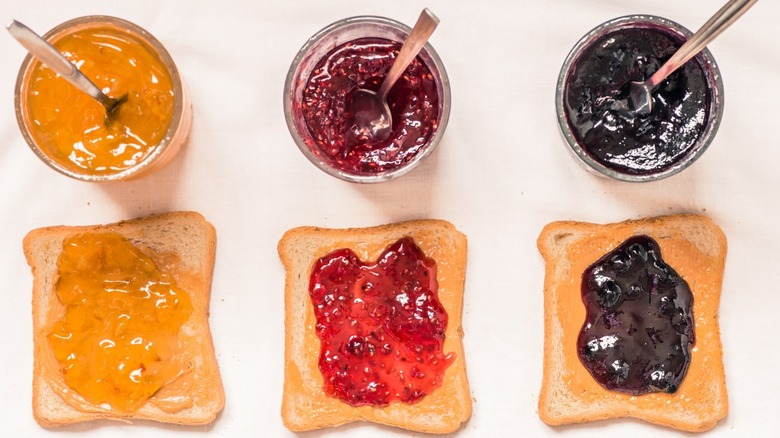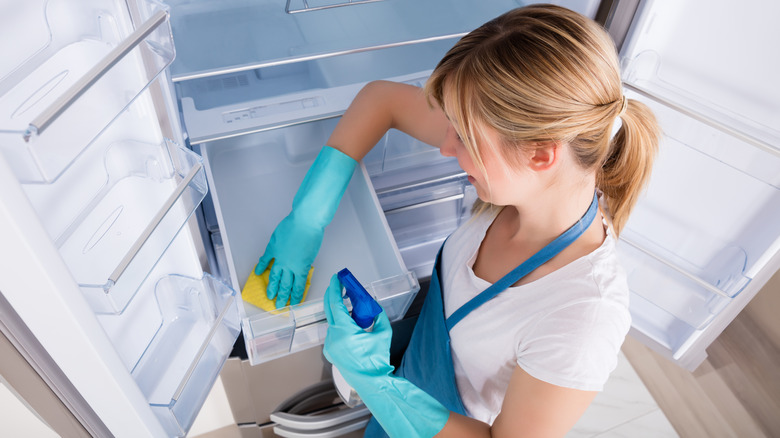You Should Always Toss Your Jam Jar If You See Mold
It may not be appetizing to think of, but mold is in the air around us all the time — including in and on our food. This can mean good things for some items like cheese or cured meats, which need some mold in their transformation process. But mold can signal unpleasant or even dangerous things in other foods, and your jam is one of them.
This unfortunate truth has to do with the way mold spreads in certain foods. A bit of mold isn't a big deal on things like hard cheeses, certain meats, and firmer vegetables, as you can simply cut away the affected area and use it as you would normally. However, items with a softer, more liquidy consistency — like yogurt, sour cream, or, yes, jams and jellies — allow the furry mold to penetrate below the surface, according to the USDA. While you might be able to scoop away some of the visible mold, it's impossible to know whether harmful spores have infiltrated further inside. They could lie in wait, ready to make you or those you're cooking for ill.
Better safe than sorry
While no one likes to waste food, the only proper course of action when mold appears in jam or similar items is to trash it. It might be annoying seeing your delicious (or expensive) jelly or preserves thrown away, but it's far better than food poisoning. While health authorities in other countries may give conflicting advice, expert tips sourced by HealthyCanning.com say that by the time mold is visible, other potentially harmful bacteria have likely also set up shop, providing even more reason to toss it.
So what can you do to avoid mold in your soft foods and spreads for as long as possible? The USDA recommends cleaning the inside of your fridge every few months with a mixture of 1 tablespoon of baking soda and a quart of water. Any visible mold spots can be treated with a more potent mix of 3 tablespoons of bleach to one quart of water. Keeping humidity levels lower in your home helps, along with carefully inspecting fruit, produce, or other items that could introduce mold into your fridge before purchasing them.
Still, mistakes happen, and you may wonder what happens when you eat mold by accident. Fortunately, you'll probably be OK, especially if it was only a small amount. It's normal to potentially feel a bit nauseated, but if symptoms become serious or persist, seek out medical care as soon as possible.

